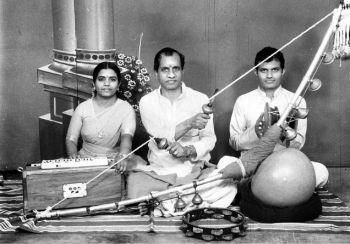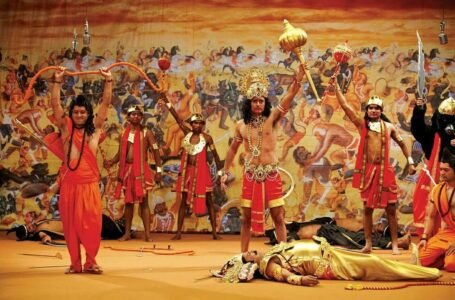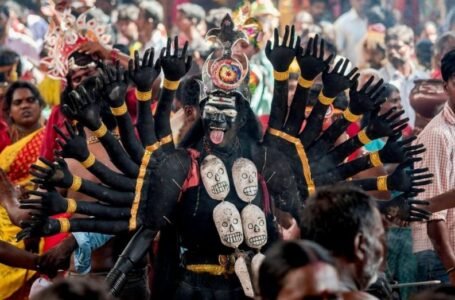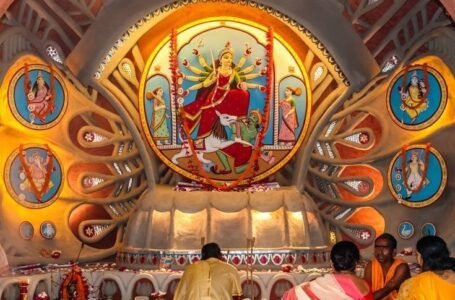Villu Paatu: The Dying Art of Bow Songs in Kerala and Tamil Nadu

India is a land of rich cultural heritage, where every art form tells a story. Among the many traditional storytelling techniques, Villu Paatu stands as a unique and mesmerizing folk art form that once captivated audiences in Kerala and Tamil Nadu. However, with the rapid modernization of entertainment, this centuries-old art is fading into obscurity.
What is Villu Paatu?
Villu Paatu, or “Bow Song,” is an ancient musical storytelling tradition that derives its name from the Villu (a large bow), which serves as the primary musical instrument. This bow, strung with bells or metallic jingles, is placed on a resonating surface and tapped rhythmically to create a mesmerizing beat. A lead singer, known as the Pulavar (poet or storyteller), narrates tales in a melodious and interactive manner, often accompanied by a chorus.
The Themes of Villu Paatu
Traditionally, Villu Paatu narrates stories from Hindu mythology, including epics like the Ramayana and Mahabharata, tales of regional folk heroes, and even historical narratives. Some performances focus on social issues, moral teachings, and legends of deities like Ayyappa, Amman, and Murugan.
The Performance: A Theatrical Experience
A Villu Paatu performance is not just about singing; it’s a theatrical spectacle that involves humor, dramatization, and audience interaction. The lead singer engages listeners through witty dialogues and rhythmic beats, while supporting performers use small percussion instruments like kudam, udukkai, and mridangam to enhance the storytelling. The audience often responds with claps, chants, and cheers, making it a communal experience.
The Decline of Villu Paatu
Despite its rich history, Villu Paatu is struggling to survive in the digital age. Several factors contribute to its decline:
- Modern Entertainment: The rise of cinema, television, and social media has overshadowed traditional folk arts.
- Lack of Patronage: Once supported by royal courts and temples, Villu Paatu now lacks financial backing and institutional support.
- Disinterest Among Youth: Younger generations find it difficult to connect with the art form due to language barriers and changing entertainment preferences.
- Urbanization: The migration of rural communities to urban areas has led to a cultural disconnect.
Efforts to Revive the Art Form
Though Villu Paatu is fading, efforts are being made to revive its charm:
- Government Initiatives: Cultural organizations and state governments occasionally organize folk festivals and heritage programs to promote Villu Paatu.
- Documentation and Digitalization: Scholars and artists are working to record performances and preserve them through digital media.
- Fusion with Modern Elements: Some artists are experimenting with blending Villu Paatu with contemporary themes and music styles to attract younger audiences.
- Educational Programs: Schools and colleges are introducing students to traditional art forms through workshops and performances.
Why Villu Paatu Still Matters?
Villu Paatu is more than just an art form—it is a cultural treasure that represents the oral traditions, folklore, and religious sentiments of Tamil Nadu and Kerala. It fosters community bonding, preserves historical narratives, and instills moral values. Allowing it to fade away would mean losing a vital piece of our heritage.
While modern entertainment continues to evolve, we must find ways to preserve and celebrate our traditional arts. Supporting folk artists, attending performances, and introducing Villu Paatu to new generations can help ensure that this musical storytelling tradition does not become a forgotten relic of the past.
Villu Paatu: The Dying Tradition of Bow Songs from Kerala and Tamil Nadu
Villu Paatu, a traditional and unique form of folk music originating from Kerala and Tamil Nadu, is a performance style that has long been the source of captivating stories about gods, folk heroes, and various mythological events. Known for its rhythmic, poetic verses accompanied by a bow-shaped musical instrument, this art form is now fading from the cultural landscape of these two South Indian states. The reasons for this decline are multifaceted, ranging from modern entertainment distractions to the changing social and political climate. This blog delves into the origins, history, cultural and political impact, and the connection of Villu Paatu with deities and folk heroes.
The Origin and Historical Context of Villu Paatu
Villu Paatu is believed to have originated in the Tamil-speaking regions of Tamil Nadu, with its roots traced back to at least the 10th century CE. However, it likely has much older origins, reflecting the ancient tradition of ballad singing and storytelling that was part of India’s oral history. The term “Villu” refers to the bow-like instrument used in the performance, while “Paatu” means song or music. Villu Paatu performances are characterized by a solo or group singer (often accompanied by a few percussionists) narrating a story with music, creating an immersive cultural experience.
The bow used in Villu Paatu is a simple yet effective instrument. It is made of wood, and a string is attached to it, which is played with a stick or a piece of bamboo, creating a resonating, rhythmic sound. The singer, while playing the Villu (bow), delivers a narrative accompanied by the sounds of this distinctive instrument, drawing the audience into a world of myth, heroism, and devotion. The stories often feature gods, goddesses, and folk heroes, touching upon themes of love, bravery, sacrifice, and morality.
Cultural and Political Impact
Villu Paatu was once a popular folk art form, performed in rural villages during festivals, temple celebrations, and social gatherings. It functioned not only as a means of entertainment but also as a form of social and cultural cohesion. The performances fostered a strong sense of community identity, offering insights into local legends, customs, and the religious beliefs of the people.
Culturally, Villu Paatu has played a pivotal role in preserving the mythology and folk traditions of the region. As with many folk art forms, Villu Paatu provided a medium for imparting oral histories, keeping the ancient stories alive through generations. It provided an outlet for local people to express their spirituality, with many of the songs glorifying deities and recounting their divine interventions in the lives of humans.
Politically, Villu Paatu once held power as a voice for social and political commentaries. Folk songs have always served as tools for societal commentary, and in the case of Villu Paatu, the performances were used to address the social issues of the time. They could subtly or directly comment on the ruling powers, speak out against injustices, or call for social reforms. The songs were a vehicle for the masses, often voiced in a way that bypassed the rigid social hierarchy, allowing a form of political dissent.
However, in the modern era, as mass media and more sophisticated entertainment technologies began to dominate, the relevance of Villu Paatu diminished. Politicians, too, began focusing on more mainstream forms of communication to reach the masses, and rural folk music, including Villu Paatu, found itself pushed to the periphery.
The Motive Behind Villu Paatu Performances
Villu Paatu’s core motive has always been to narrate stories — often with a divine or heroic undertone. The songs are a medium through which communities could connect with their religious beliefs and cultural heroes. The religious songs centered around gods and goddesses were primarily performed during festivals and temple functions to invoke blessings or recount divine exploits. These performances helped preserve religious narratives and created a spiritual atmosphere in local communities.
The folk heroes depicted in Villu Paatu narratives were often champions of local culture and values. Their tales were meant to inspire the common folk, reminding them of the values of bravery, morality, and selflessness. These heroes were often larger-than-life characters who embodied the virtues the community aspired to. While the central figures in Villu Paatu were typically gods or goddesses, many folk songs also chronicled the adventures and sacrifices of regional heroes. These figures often emerged from the lower classes of society, giving voice to marginalized communities.
The performances provided entertainment while also educating the audience about moral behavior, ethical living, and proper social conduct. Villu Paatu’s communal aspect made it a perfect tool for public education, particularly in rural communities, where illiteracy rates were high, and written literature was inaccessible.
The Connection with Gods and Folk Heroes
The strongest connection Villu Paatu shares is with gods and folk heroes. Many of the songs narrate the adventures and triumphs of deities from Hindu mythology, such as Lord Krishna, Lord Shiva, and Goddess Durga. For example, the epic of Ramayana and the Mahabharata have been re-imagined through Villu Paatu, with characters like Rama, Sita, and Arjuna taking center stage. In these songs, the gods are portrayed as heroic figures who protect dharma (righteousness) and ensure cosmic order.
Villu Paatu songs often explore the mythology surrounding a particular deity. For instance, a song may narrate Lord Krishna’s childhood pranks or his heroic deeds during the battle of Kurukshetra. The narration is accompanied by the rhythmic sounds of the bow, which creates an immersive experience for the audience, making the divine tales more engaging and memorable. The use of music in this form also evokes emotions that complement the story, enhancing the sense of devotion and reverence.
Folk heroes, on the other hand, are often local figures whose tales have been passed down through generations. These heroes, though not divine, possess qualities that reflect the values of the community. They may not be supernatural beings, but their actions and lives often inspire those around them. For example, songs about kings, warriors, or sages who performed heroic acts, fought against injustice, or upheld righteousness are central to many Villu Paatu performances. Their lives serve as lessons for the listeners, teaching them the importance of bravery, justice, and loyalty to the community.
The Decline of Villu Paatu
Despite its rich cultural history, Villu Paatu is struggling to maintain relevance in today’s rapidly modernizing world. Several factors have contributed to this decline. The rise of technology and modern entertainment, such as television, films, and digital media, has overshadowed traditional forms of art like Villu Paatu. Moreover, as urbanization spreads and rural communities decline, the environment that once fostered such performances has all but disappeared.
The younger generation, exposed to globalized entertainment and fast-paced lifestyles, no longer finds time for such slow, rhythmic, and reflective forms of storytelling. Traditional performances that once brought people together are now relegated to small-scale performances in rural areas, with little audience outside of the elderly or deeply traditional communities.
Political changes have also impacted the promotion and preservation of folk art. Governments in both Kerala and Tamil Nadu have focused more on urban development, tourism, and other forms of entertainment, neglecting the grassroots culture that once thrived. The lack of funding and recognition for folk artists and their crafts has led to the gradual decline of Villu Paatu performances.
The Revival and Preservation of Villu Paatu
Despite the many challenges, efforts are being made to revive Villu Paatu. Cultural organizations, folk artists, and government initiatives are working to preserve this art form by encouraging its inclusion in cultural festivals, school curriculums, and tourist attractions. There is also a renewed interest in reviving traditional art forms across India, and Villu Paatu is finding its place in this movement.
In conclusion, Villu Paatu, a deeply rooted cultural tradition, is fading from the scene but still carries the soul of South India’s folklore, religion, and history. Its connection to gods, heroes, and the values they represent is a testament to the power of folk music in shaping societies. To ensure its survival, efforts must continue to embrace its uniqueness and celebrate its place in the cultural heritage of Kerala and Tamil Nadu.


